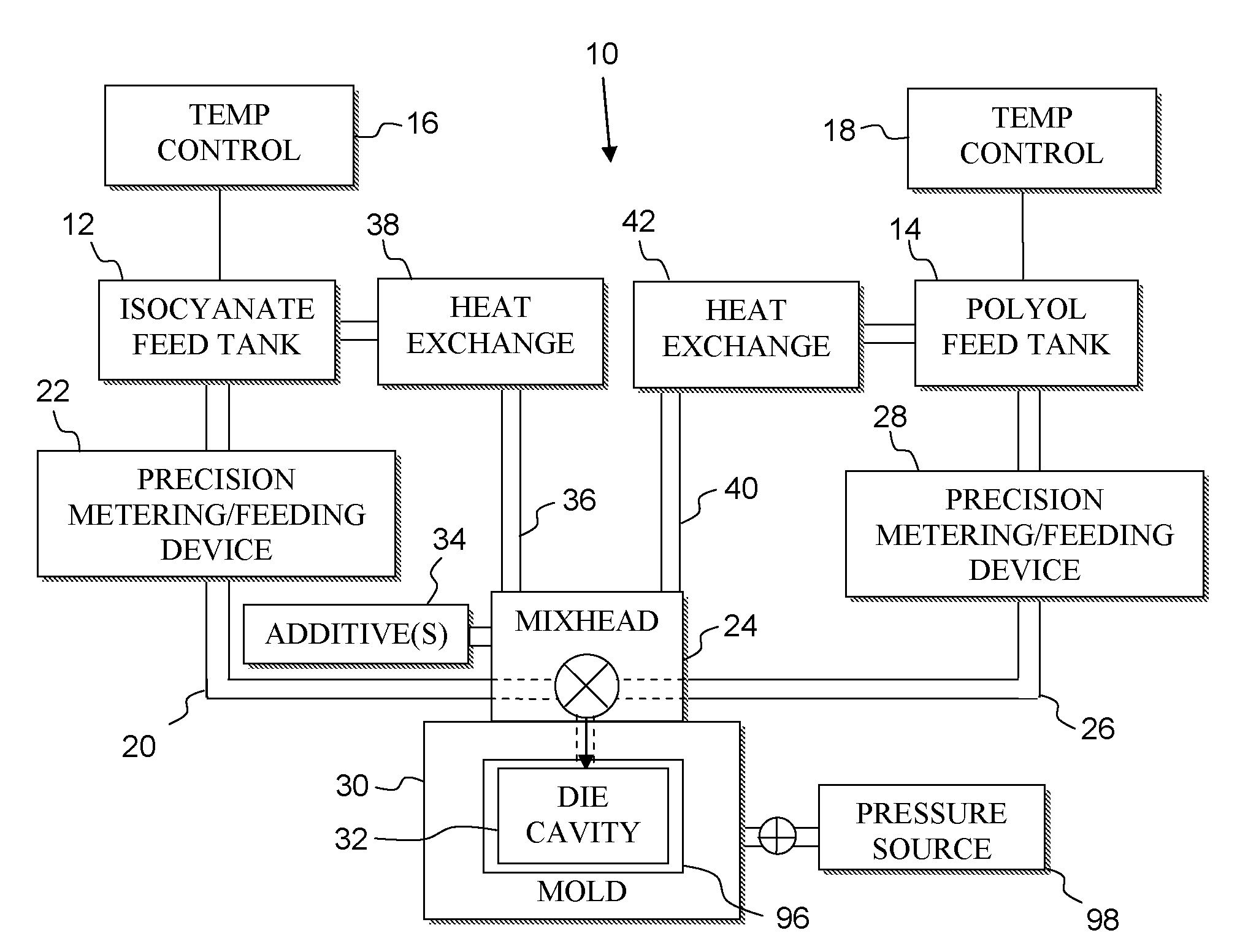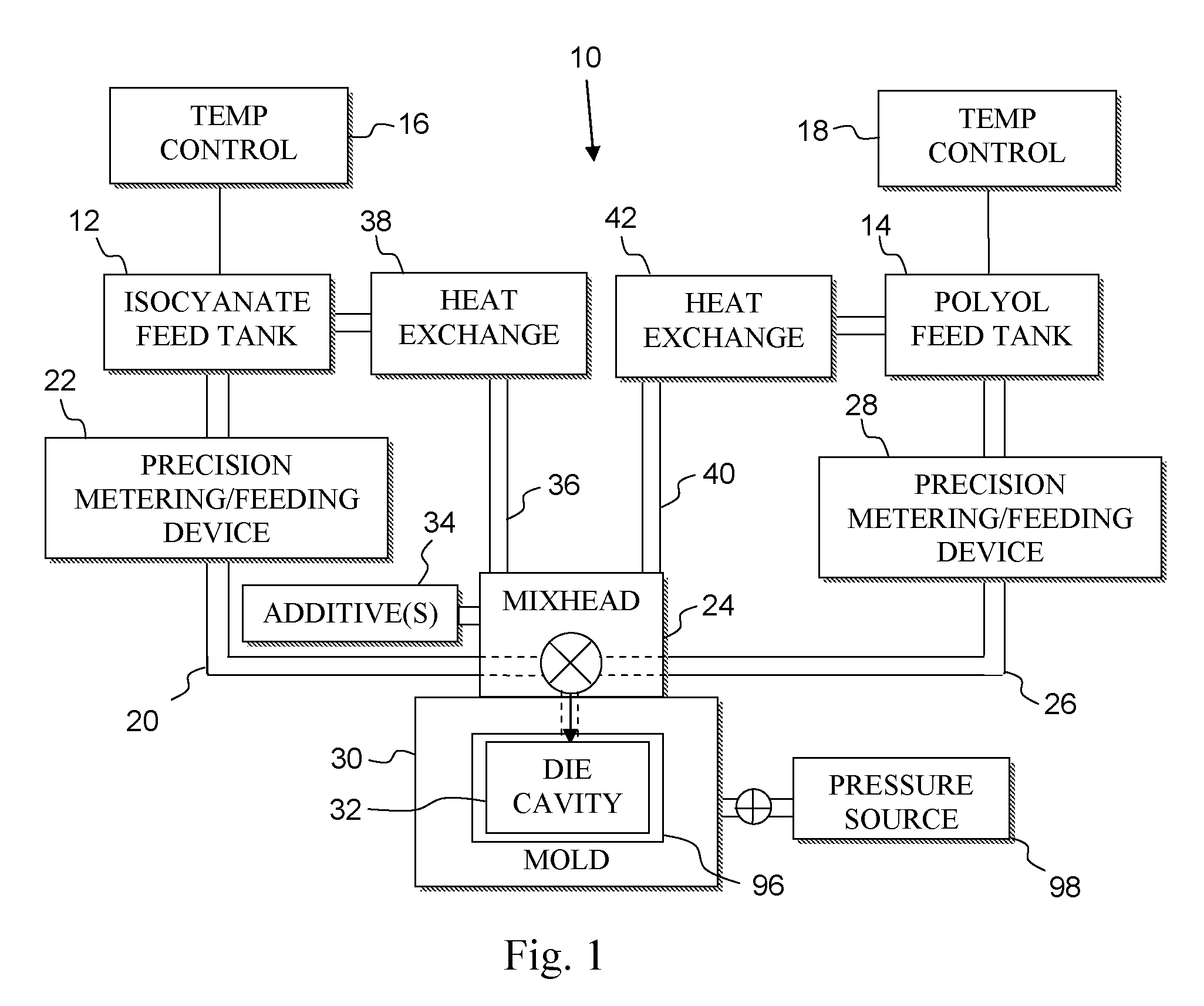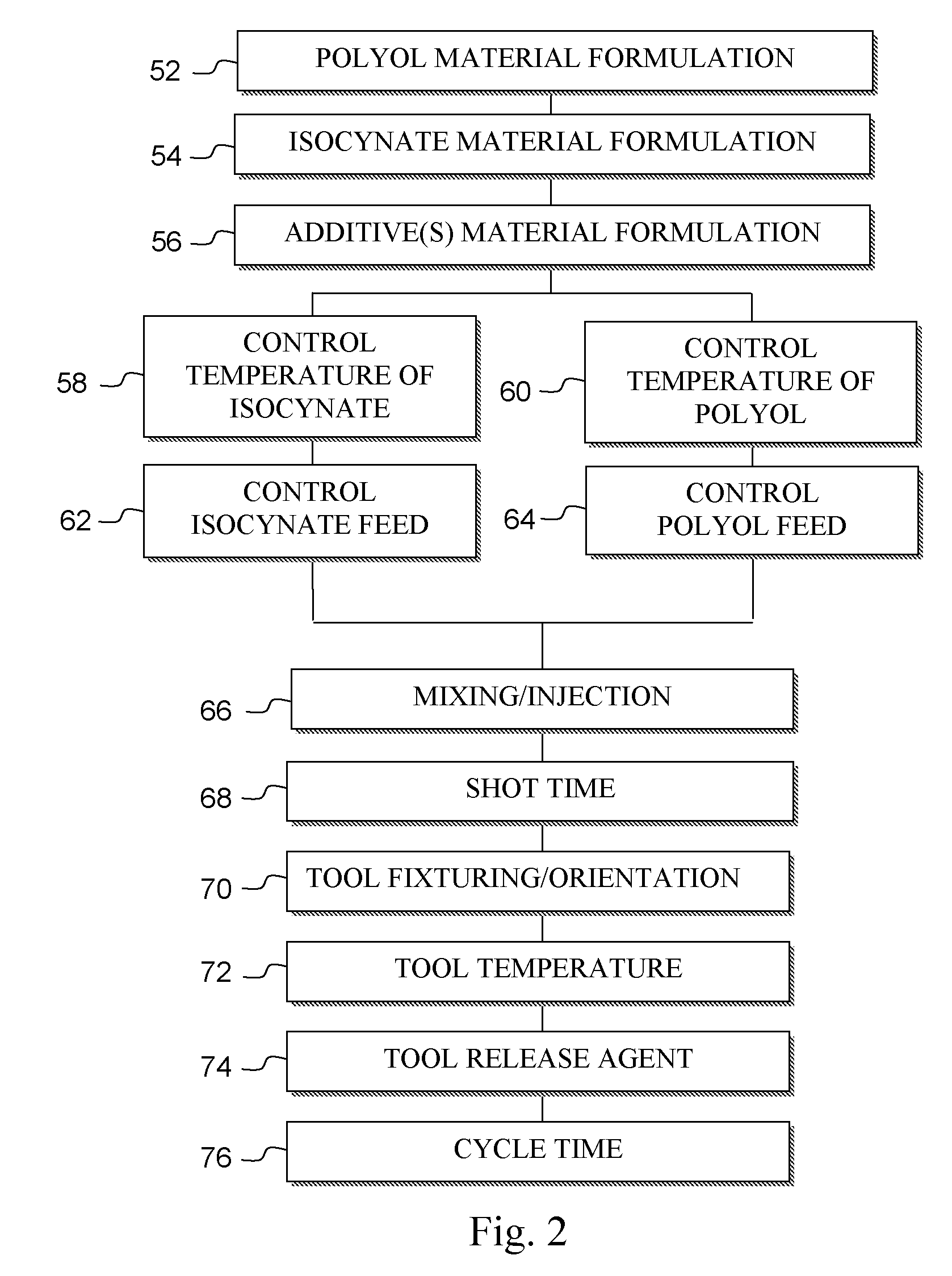Casting materials
a technology of casting materials and casting materials, which is applied in the direction of manufacturing tools, foundry patterns, moulding apparatus, etc., can solve the problems of limited dimensional accuracy of parts manufactured using a conventional investment casting process, limited use of wax for investment castings, and relatively high cost of conventional wax, so as to achieve sufficient rigidity, low density, and the effect of low cos
- Summary
- Abstract
- Description
- Claims
- Application Information
AI Technical Summary
Benefits of technology
Problems solved by technology
Method used
Image
Examples
example
[0086]For purposes of illustration and not limitation, the following Example is offered. A RIM polyurethane foam pattern comprising isocyanate, polyol and additives, e.g., as described with reference to FIGS. 1-4 above, was molded in a one step operation in a RIM mold to have a shape of a medical hip implant. The pattern was made using the RIM parameters of 1800 psi mix pressure, 30 lbs / min flow rate, a 0.2 second shot time and mold temperature of 130 degrees Fahrenheit (approximately 54 degrees Celsius). A mold release agent was used to facilitate the release of the foam pattern from the RIM mold. The molded pattern had an aggregate density of about 8 lbs / ft3. The pattern was invested in a ceramic shell mold using “lost wax” process techniques such that the shell mold had a wall thickness generally up to 0.5 inches thick. The mold / pattern then was heated to 1900 degrees Fahrenheit (approximately 1038 degrees Celsius) in a furnace for a time of 120 minutes to burnout the pattern wit...
PUM
| Property | Measurement | Unit |
|---|---|---|
| density | aaaaa | aaaaa |
| temperature | aaaaa | aaaaa |
| pressure | aaaaa | aaaaa |
Abstract
Description
Claims
Application Information
 Login to View More
Login to View More - R&D
- Intellectual Property
- Life Sciences
- Materials
- Tech Scout
- Unparalleled Data Quality
- Higher Quality Content
- 60% Fewer Hallucinations
Browse by: Latest US Patents, China's latest patents, Technical Efficacy Thesaurus, Application Domain, Technology Topic, Popular Technical Reports.
© 2025 PatSnap. All rights reserved.Legal|Privacy policy|Modern Slavery Act Transparency Statement|Sitemap|About US| Contact US: help@patsnap.com



